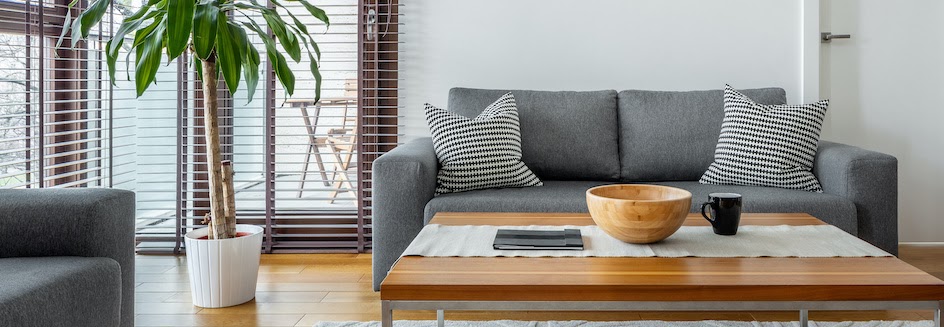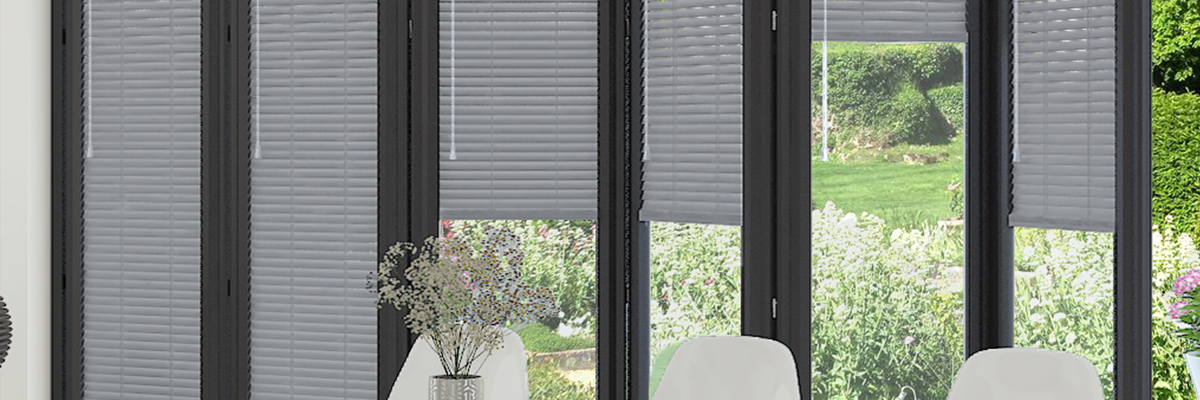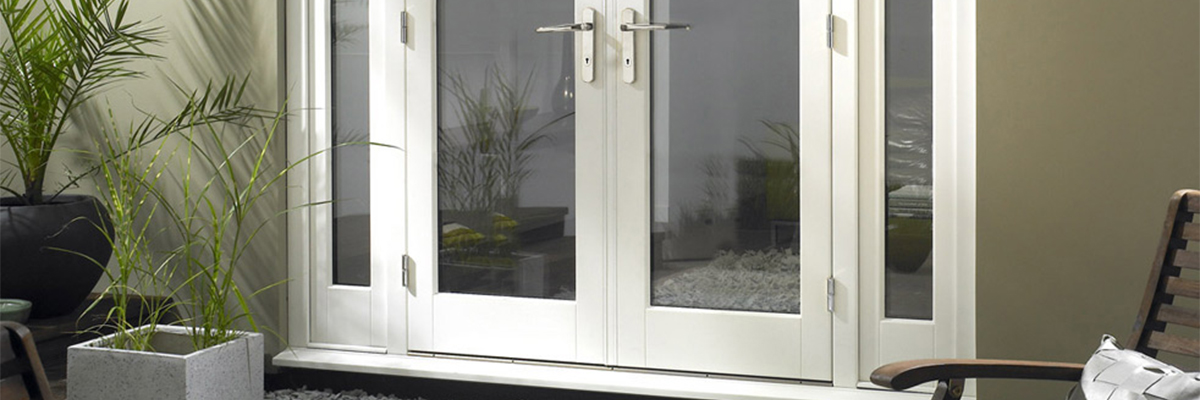Patio doors are a popular home design feature, especially among those who like the open space concept. The large glass panels can make your humble abode feel larger and more welcoming and allow more light in. While a stunning design element, glass doors can also pose challenges when it comes to selecting the right window treatments.
If you have patio doors, you know the struggle between having the right light control and privacy but still using the door with ease. Tangled window vanes, having to adjust the slats and making sure nothing gets caught in the corded mechanisms can be a real pain every time you want to use the door.
Fortunately, there are blinds for patio doors that enable you to add style, control light and still use the doors with ease. Here, we’ll show you the best blinds for patio doors and give you tips on what to consider so you can choose the best ones for your taste and functionality.
Things To Consider When Buying Door Blinds
Whether you’re buying blinds for patio doors, bifold doors, french doors or sliding doors, there are a few things to keep in mind. How you use the door and the space around it will inform the best style of blind for your needs. It’s also important to consider your budget, design preferences and mounting techniques when selecting a patio door blind.
Here are a few questions to ask yourself when purchasing window blinds for your patio or glass doors:
— What is your style? Think about if the colour or pattern of your blinds needs to match decorative items throughout the room.
— What is your budget? Custom-fit blinds can be more expensive than generic options. Other features such as remote control cordless mechanisms and certain patterns can also increase costs.
— How much light control do you need? If you’re looking for complete darkness or top-notch privacy, a blackout blind will be your best option. For those who want to let sunlight filter into the room, a voile fabric or slatted blinds, like horizontal venetian blinds and wooden blinds, are a better option.
— Do they need to be energy efficient? Some blinds feature thermal properties that can help trap in heat during cooler months and keep it out during peak summer temperatures. If you need blinds that help control temperature, pleated blinds and honeycomb blinds are a great option for patio doors.
— How will you mount the blinds? Most often, blinds for patio doors are installed using an outside mount. That means the blinds are attached to the wall or ceiling outside of the window frame. With this mount, you can open the blinds completely, making it easy to move in and out of the doorway.
The 6 Best Blinds for Patio Doors
Armed with the answers to the key questions above, you can make an informed decision on the best blinds for patio doors in your home. In some cases, you may need to compromise a little on budget, style or design to find the blind that fits best. Here are some of our favourite blinds to use on patio doors throughout your home.
1. Day & Night Blinds
If light control and versatility are your priorities, these blinds are a great choice. Day & Night blinds feature alternating layers of fabric strips — one that is opaque and one that is sheer. You can adjust the blinds so that the sheer fabric is showing, letting natural light stream into the room. Then, when you want privacy or want to block out light, you can adjust the blinds so the opaque fabric is showing.
2. Vertical Blinds
Vertical blinds are the classic option for patio doors and the ideal choice if you’re all about practicality. They feature slats that run straight up and down rather than horizontally, making it easy to open them so you can use your patio door. These utilitarian blinds are also incredibly easy to clean, and they collect less dust than horizontal styles since the dirt falls to the floor rather than sitting on the slats. Vertical blinds are also ideal for large patio doors since they can easily be customised to fit any width.
3. Perfect Fit Blinds
If you use your patio doors all the time — or have kids and pets that love going in and out of the house — Perfect Fit blinds are a great solution. These no-drill blinds snap right in between the beading and glass of your UPVC patio door window frame. That means you don’t have to mess with power tools or screws to get them installed.
Since they mount directly into the frame, you can simply open and close the door, without ever having to touch the blinds. Plus, they don’t have any cords or cables. That means they’re ideal for pet and child safety or busy homes. They come in a range of styles, including real wood and faux wood blinds as well as honeycomb blinds.
4. Roller Blinds
Another option for busy homes and patio doors that are regularly used are roller blinds. This traditional window dressing is made of one large piece of fabric that rolls up and down on a headrail as the blind is opened or closed. They offer a clean, sleek look and are perfect for sliding patio doors, bay windows, large windows and bifolding doors. They come in a wide range of colours and patterns, and you can also find waterproof styles for use in kitchens and conservatories.
5. Blackout Blinds
If you’re looking for french door blinds that can offer superb light control and privacy, look no further than blackout blinds. Blackout blinds feature thick or tightly woven fabrics to help block out light and keep passersby from peering through your patio doors. Try roman blinds — which feature elegant pleats when raised — on front doors for a touch of class and sophistication, or opt for a blackout roller blind in a bright colour or bold pattern to liven up sunroom doors.
6. Thermal Blinds
If you are focused on reducing your energy costs and want patio door blinds that support this goal, think about choosing a thermal blind. Thermal blinds are made of fabrics that may help you save money on energy bills. In fact, organisations like the National Energy Foundation found that blinds can increase energy savings by up to 47%. Thermal blinds also feature designs, such as pleats or honeycomb construction, that create an insulating layer, preventing cold draughts from chilling your home.




